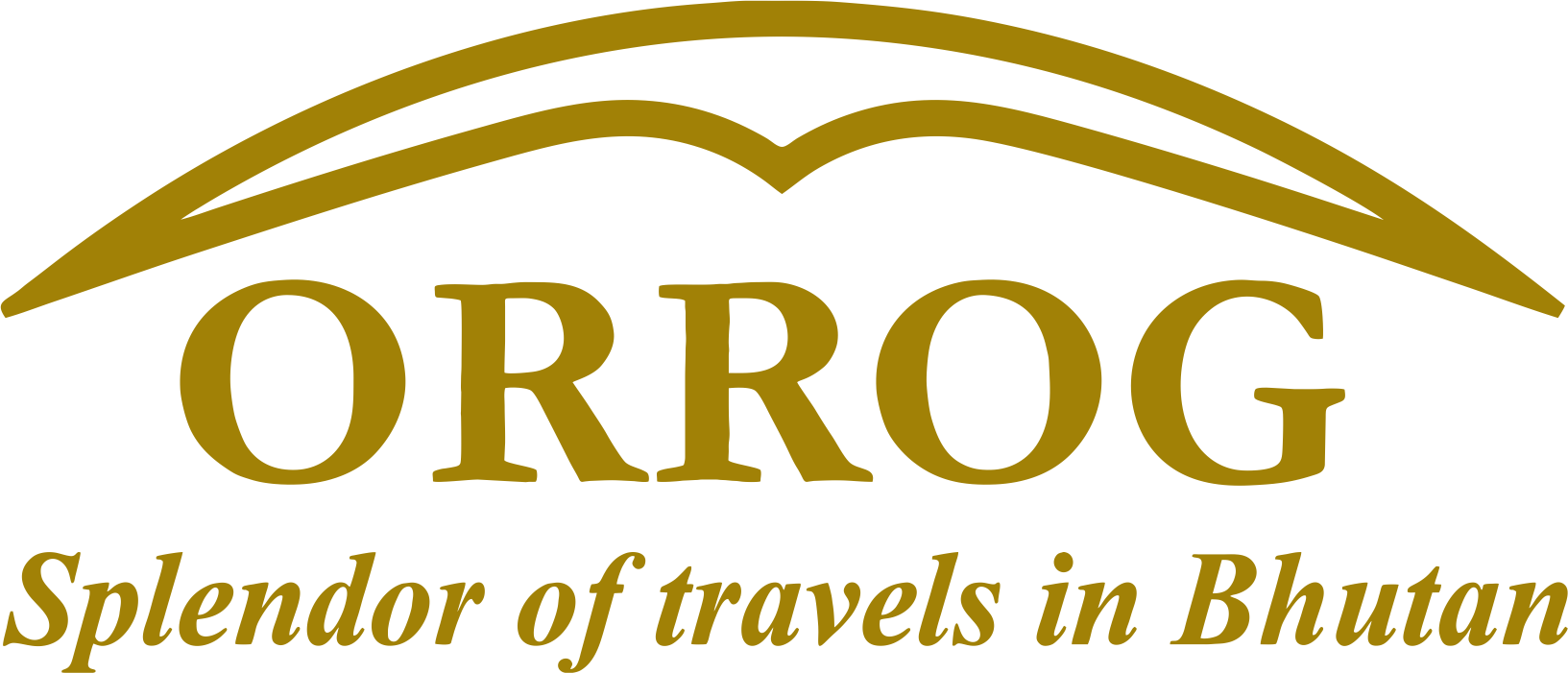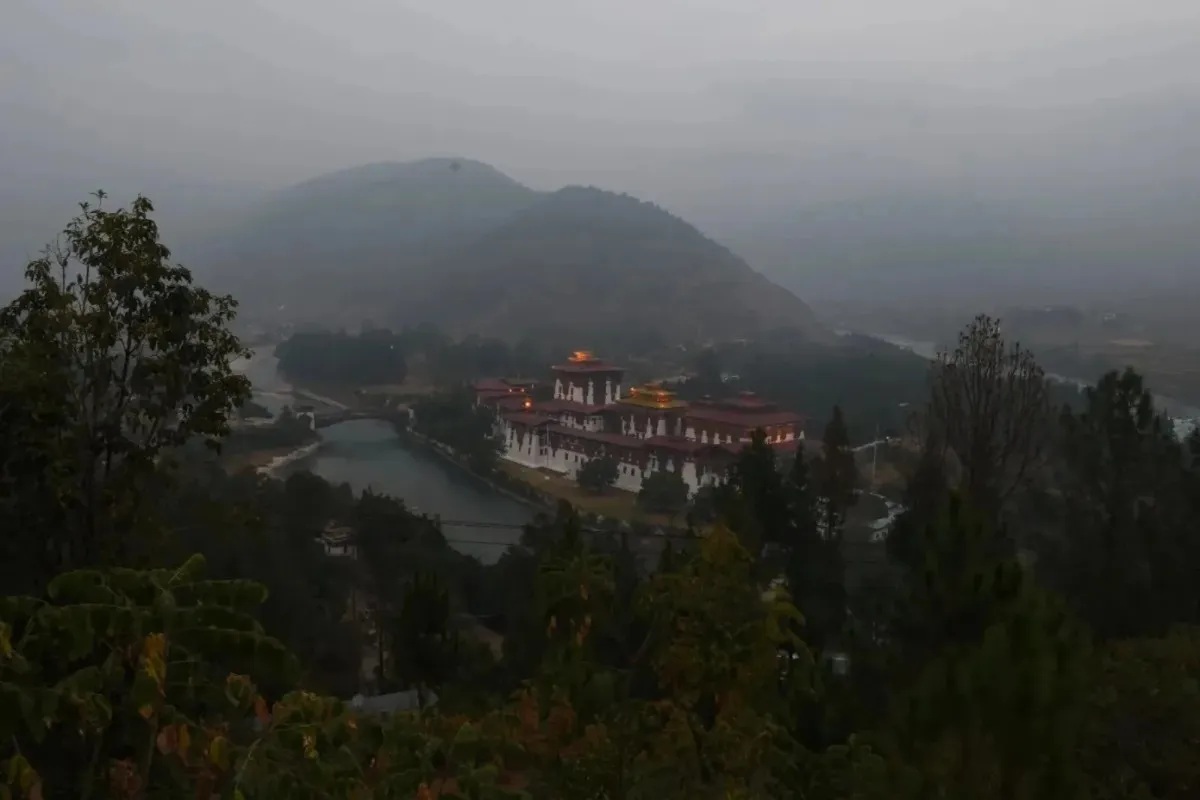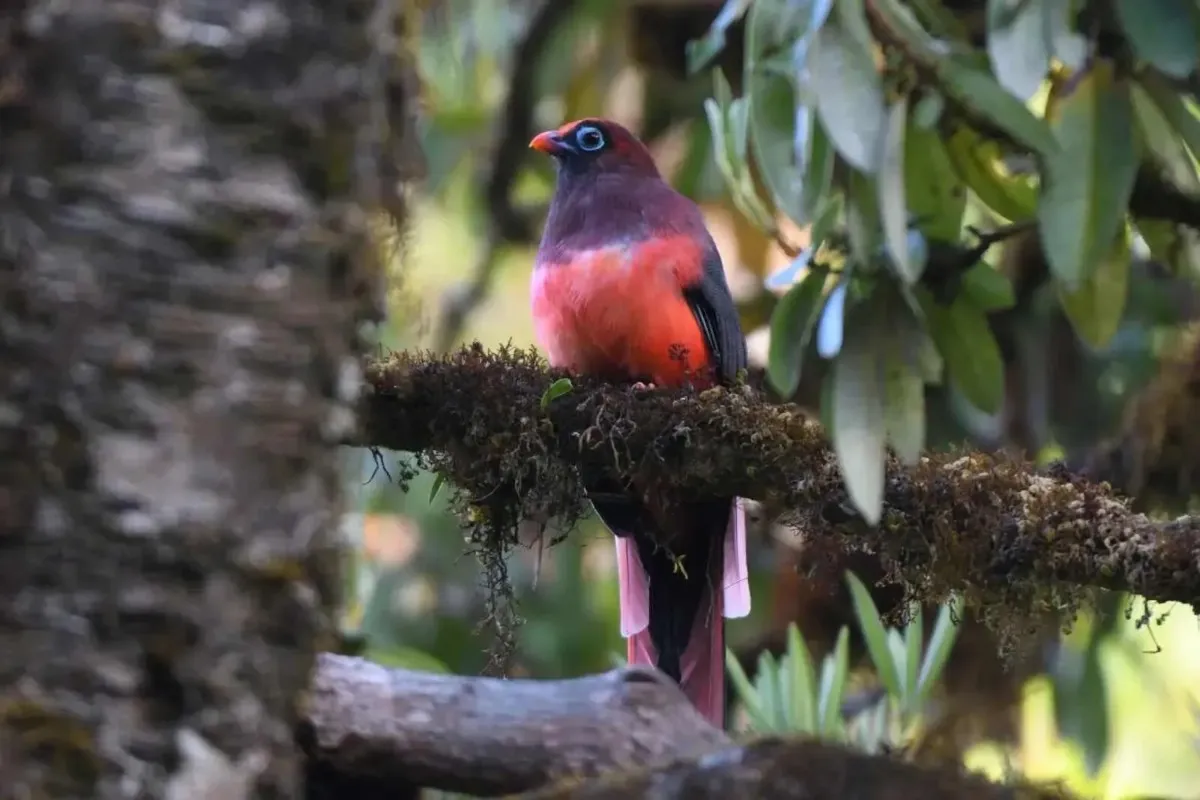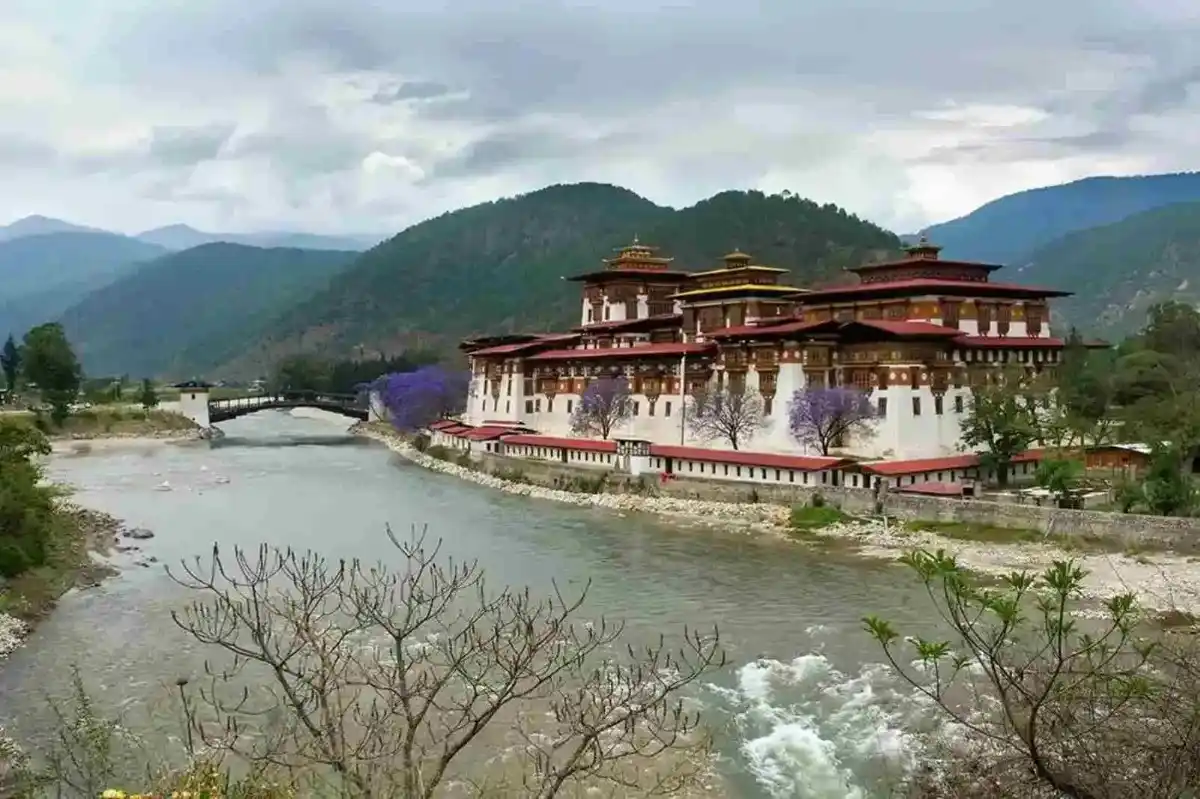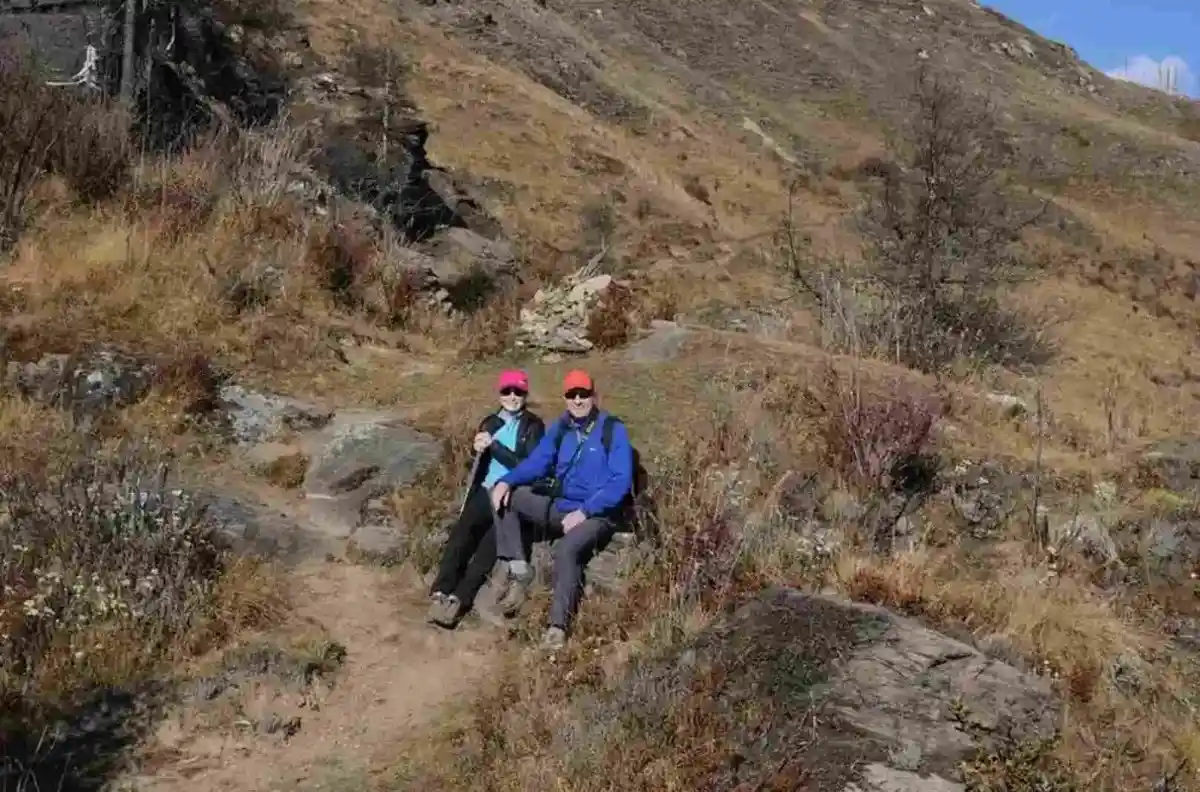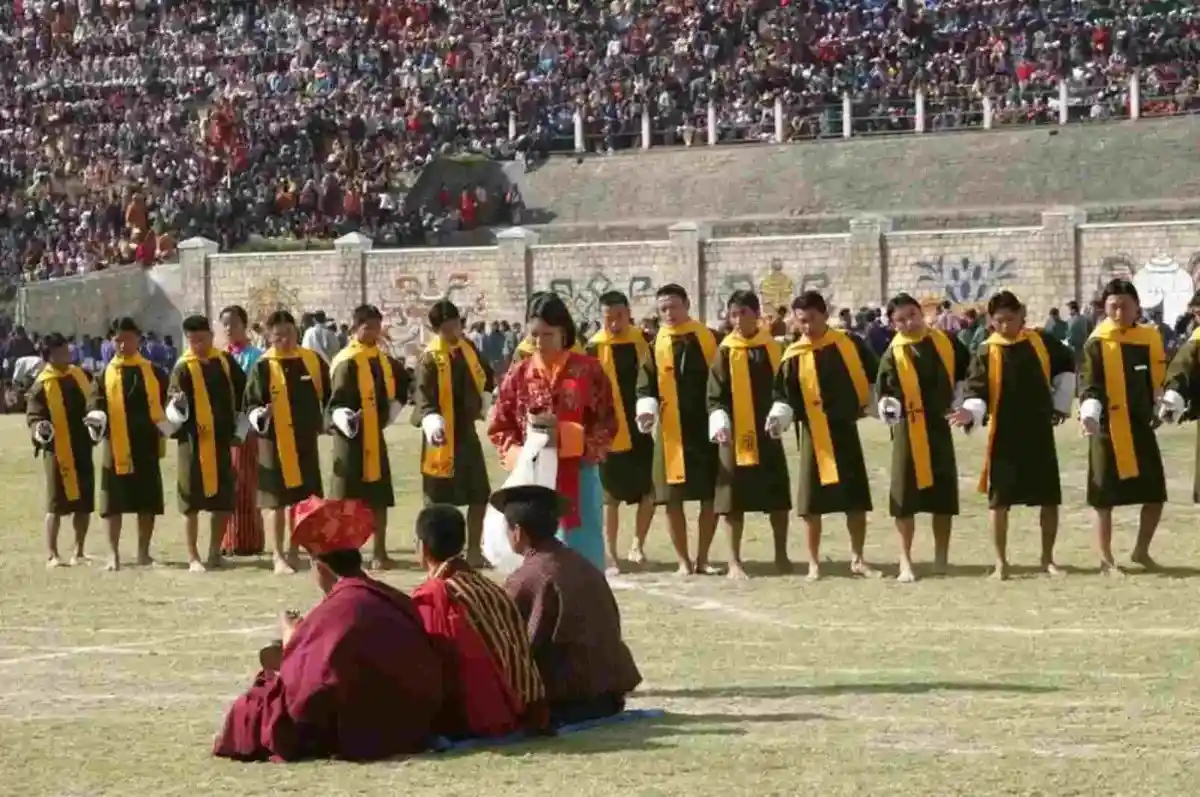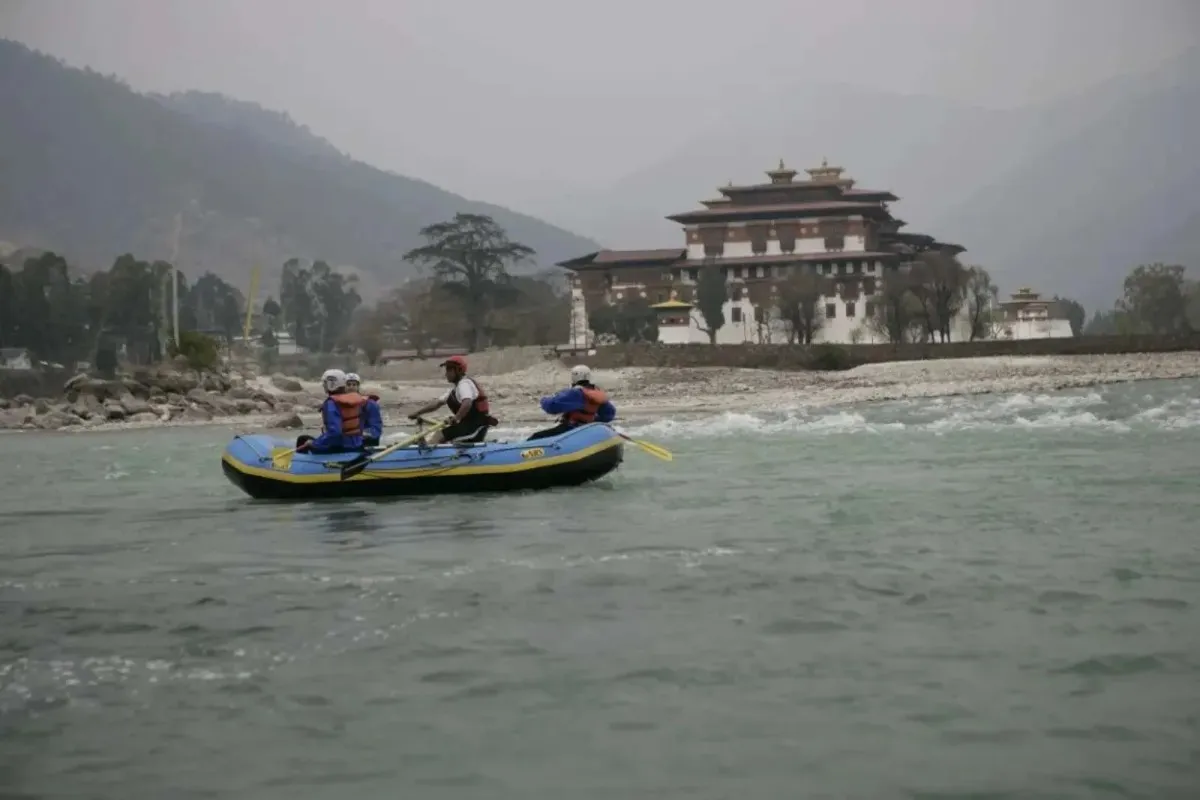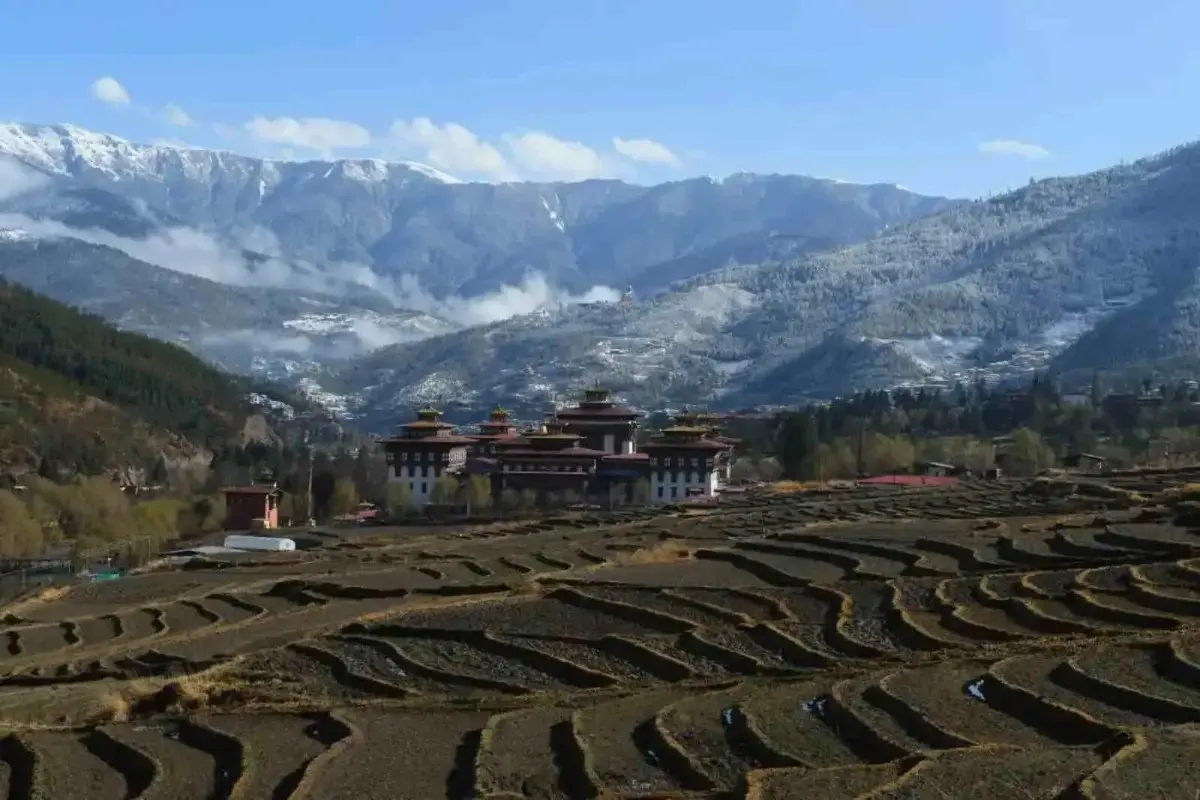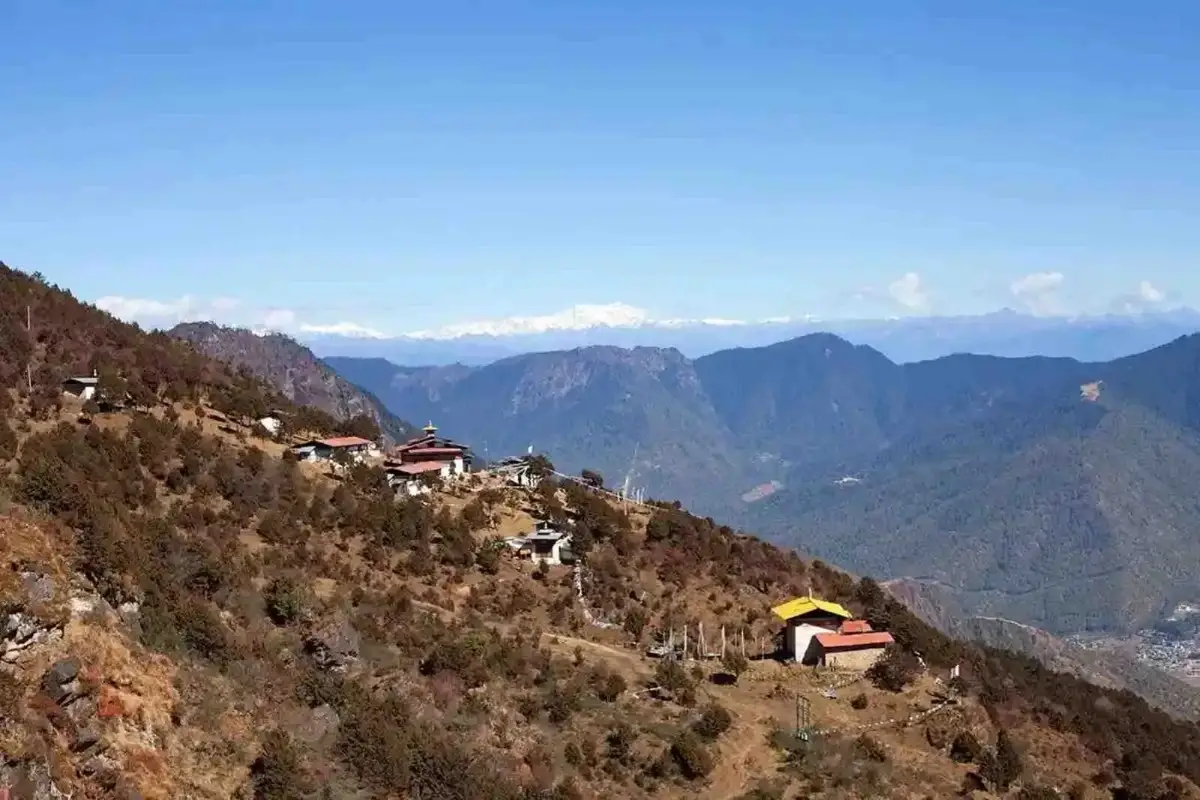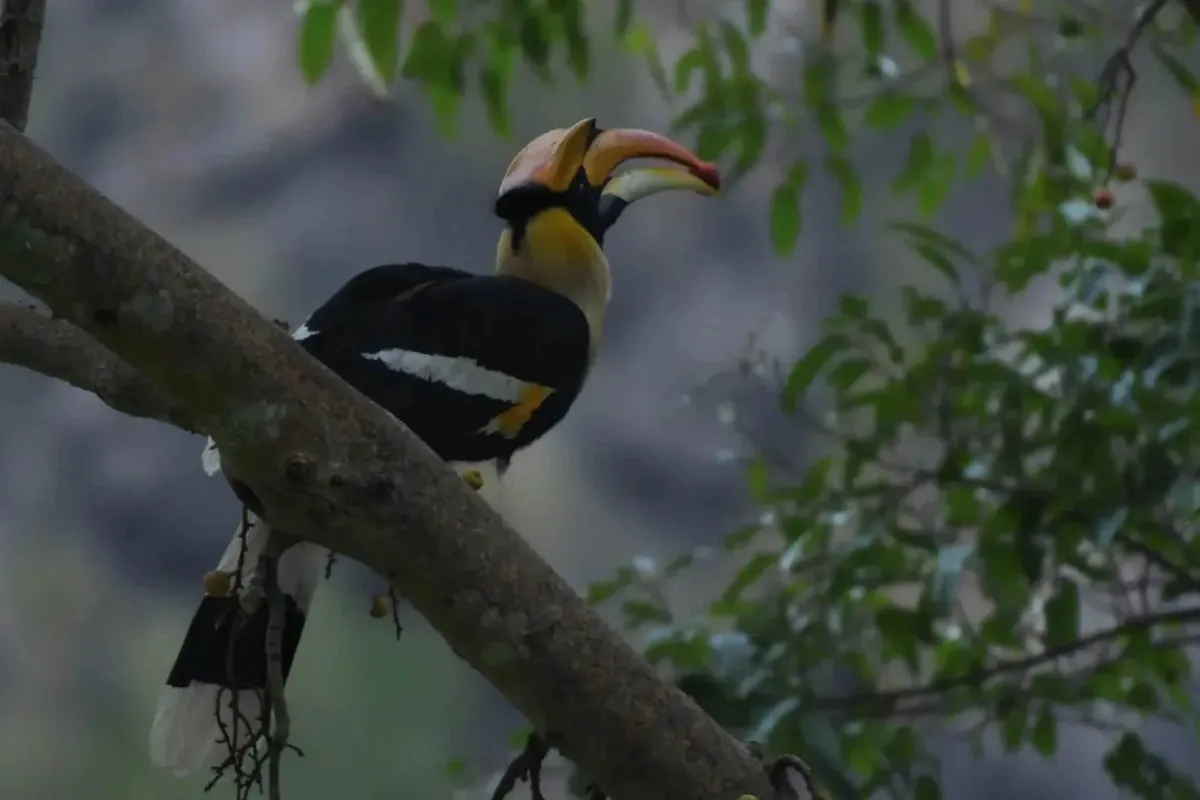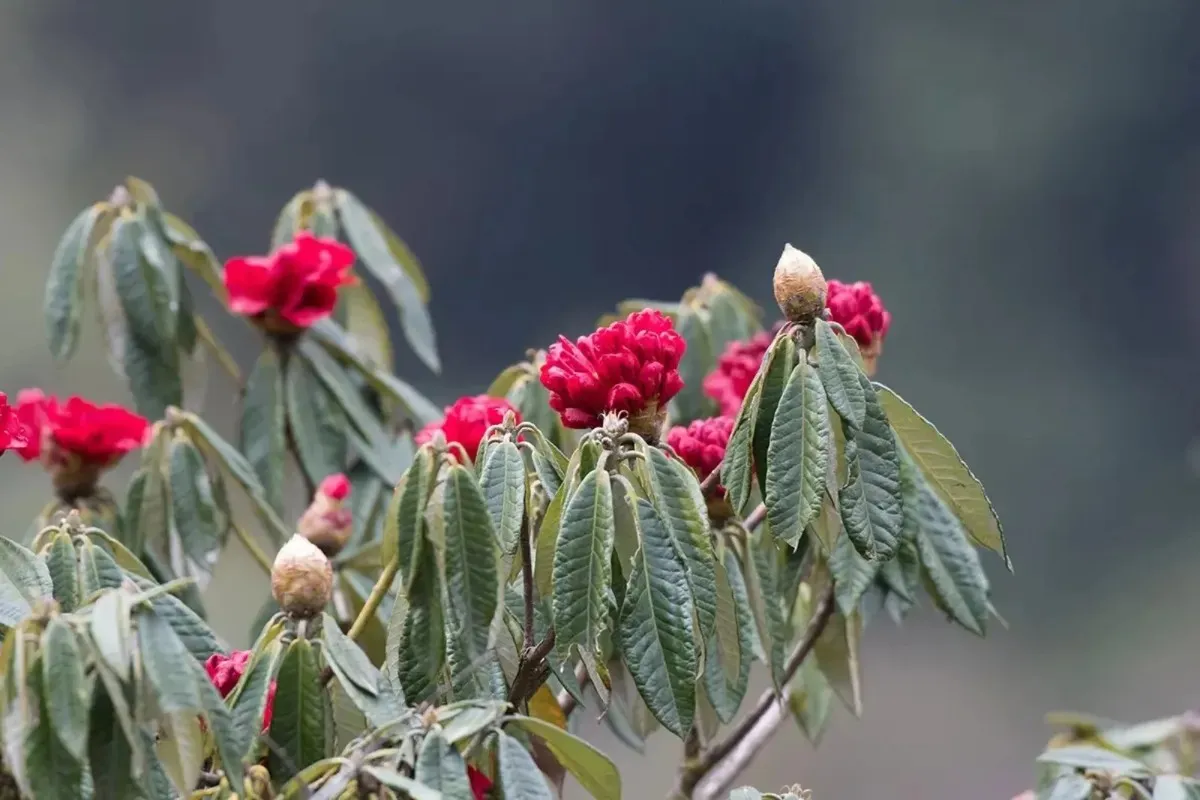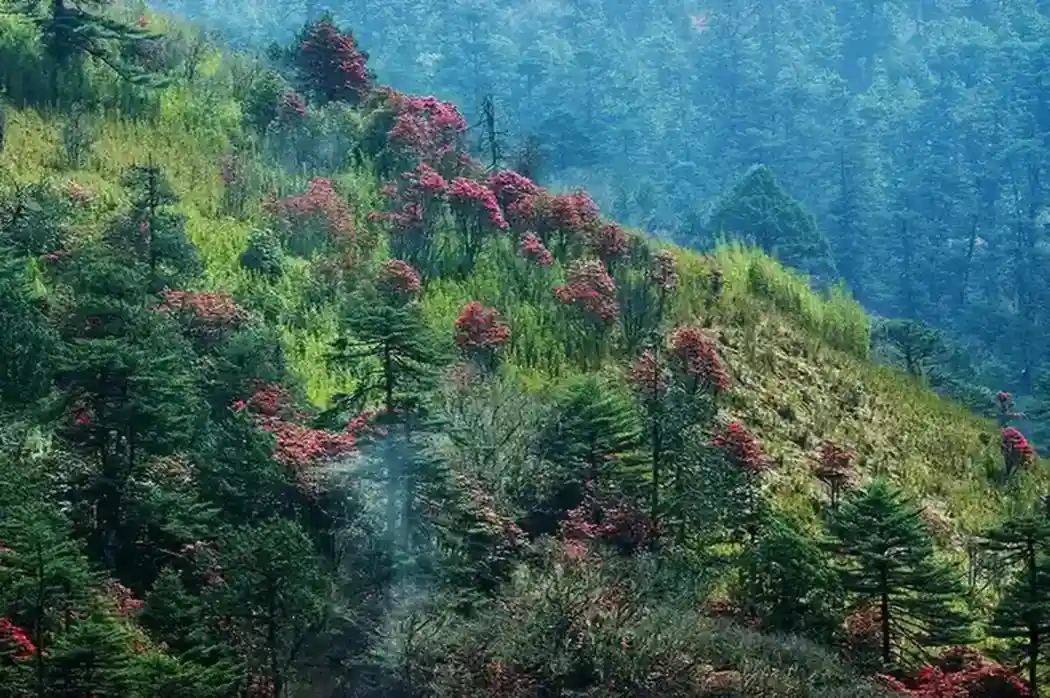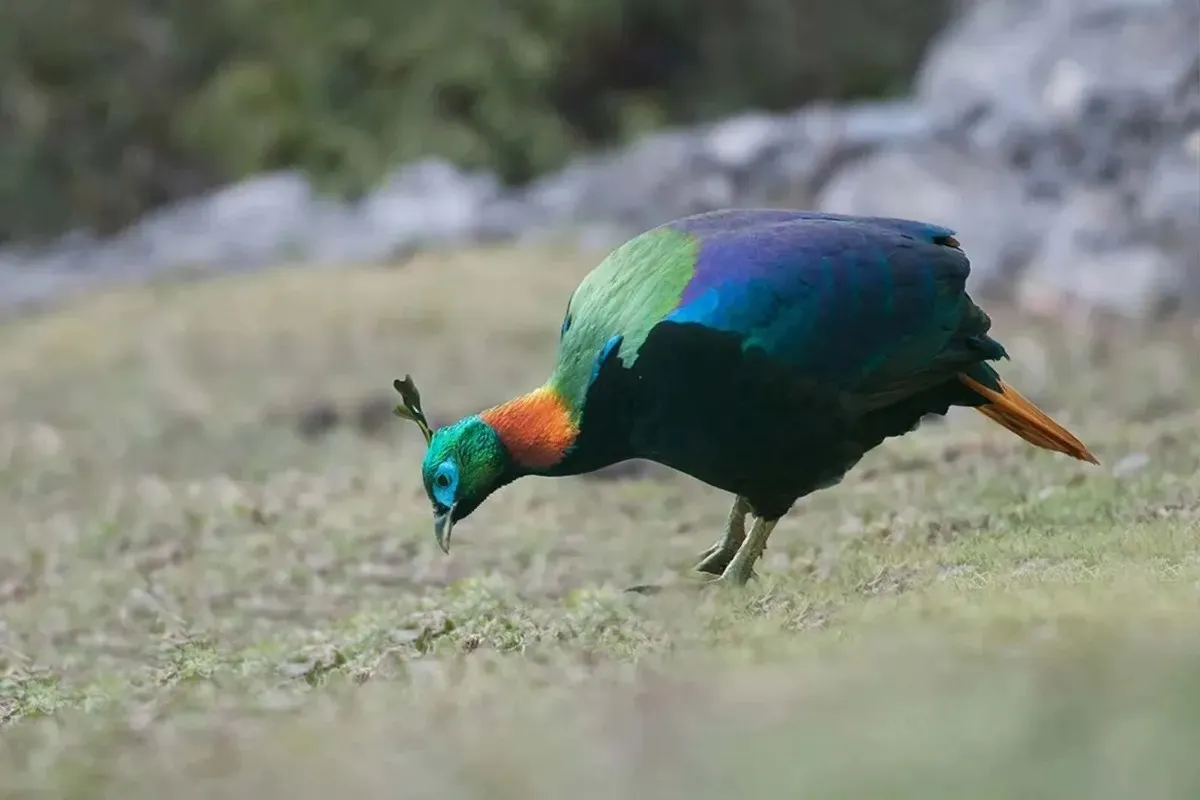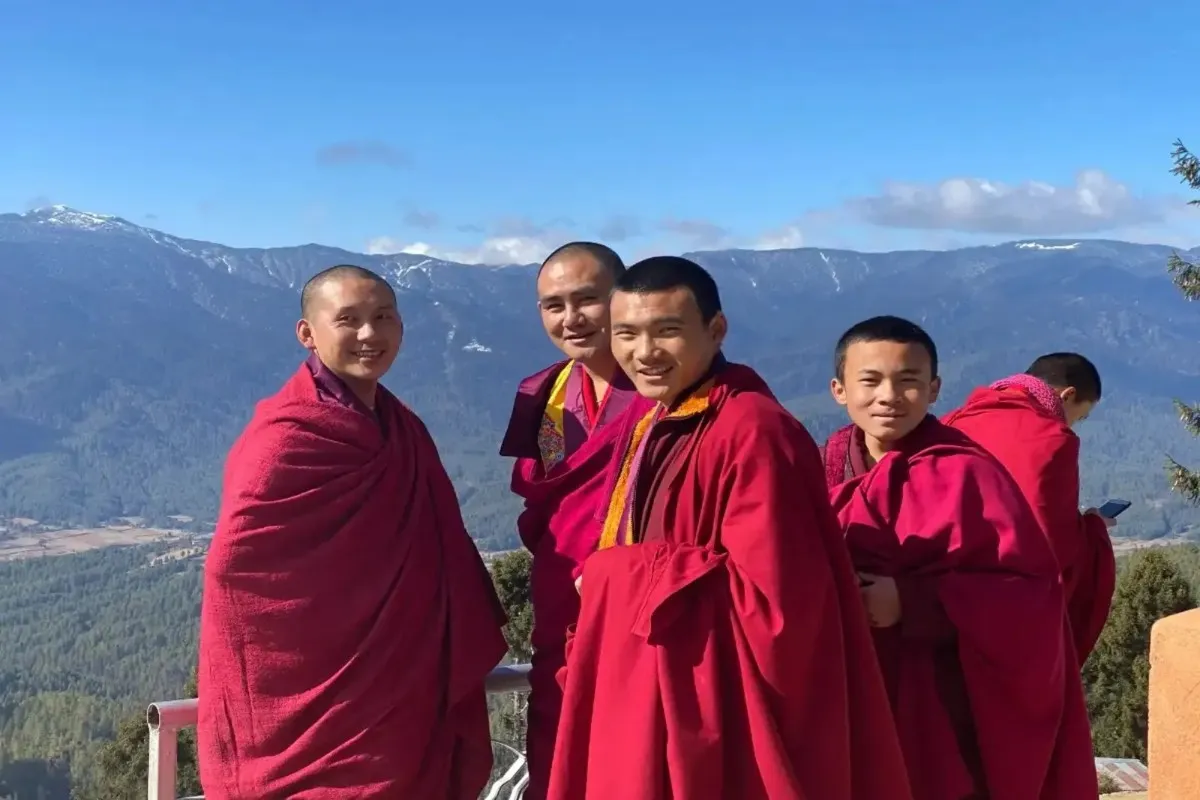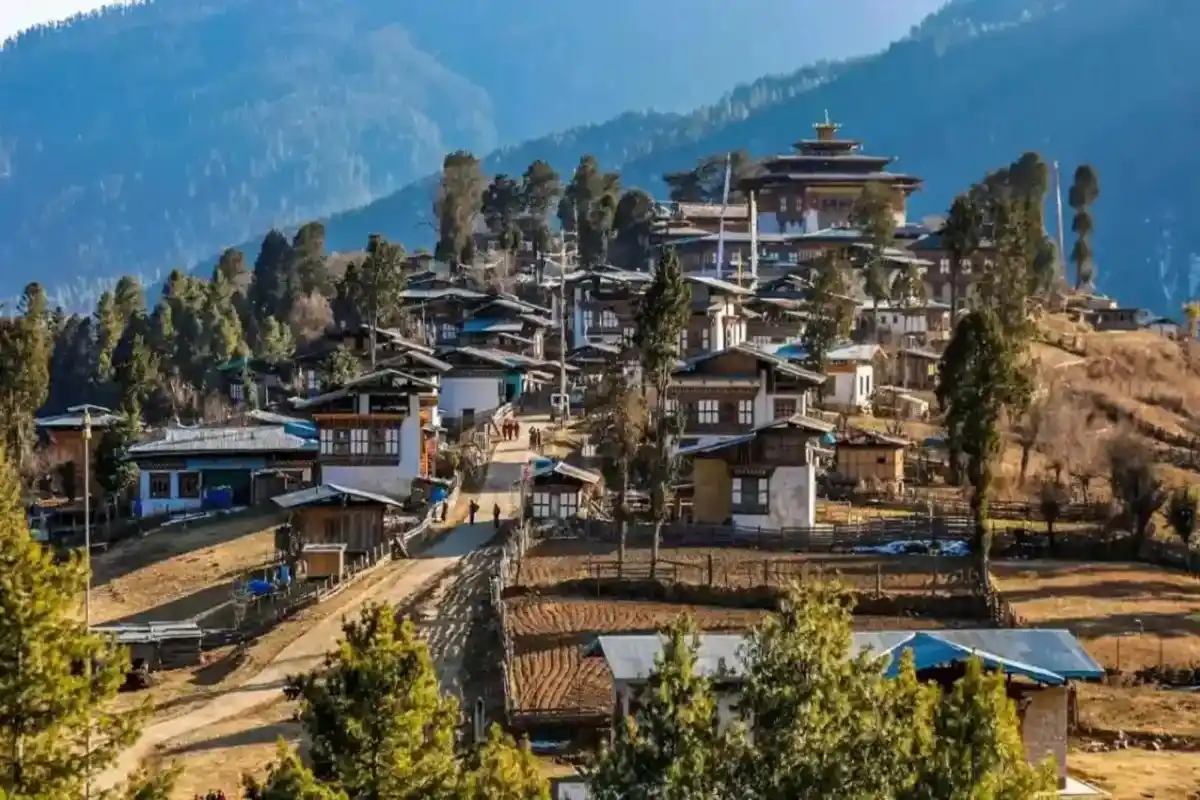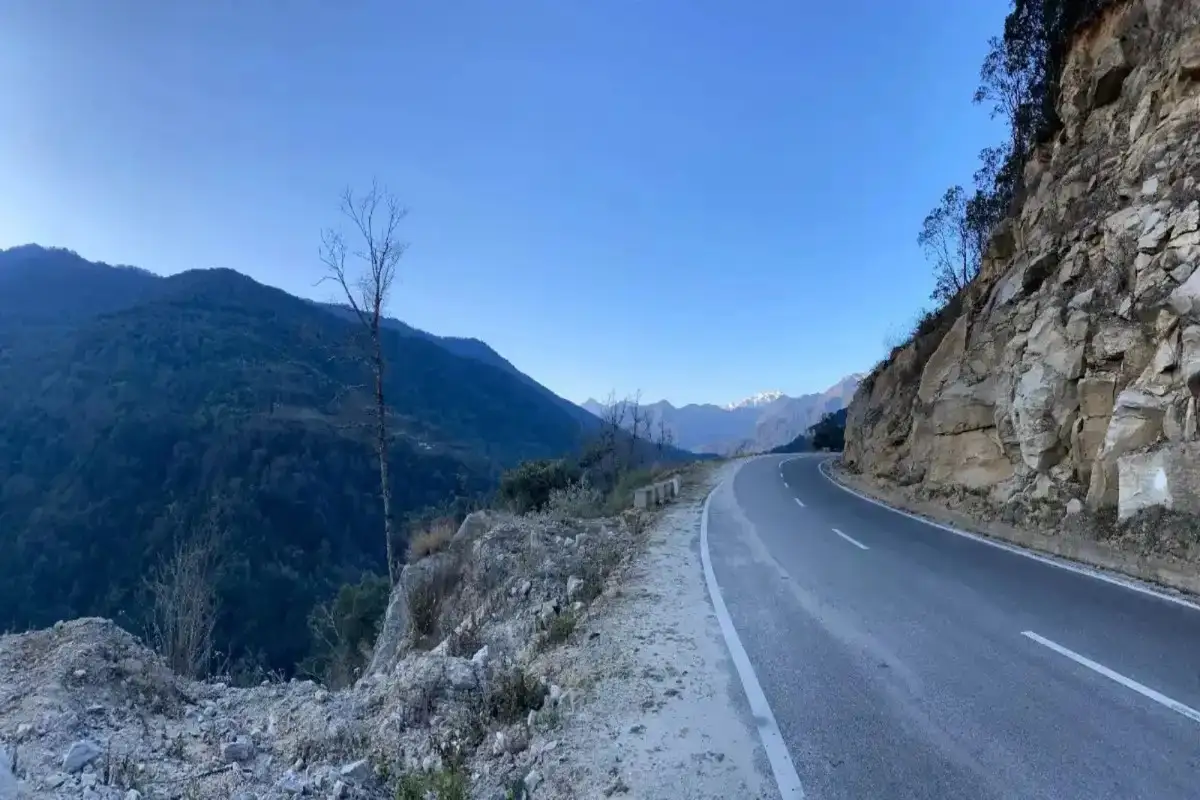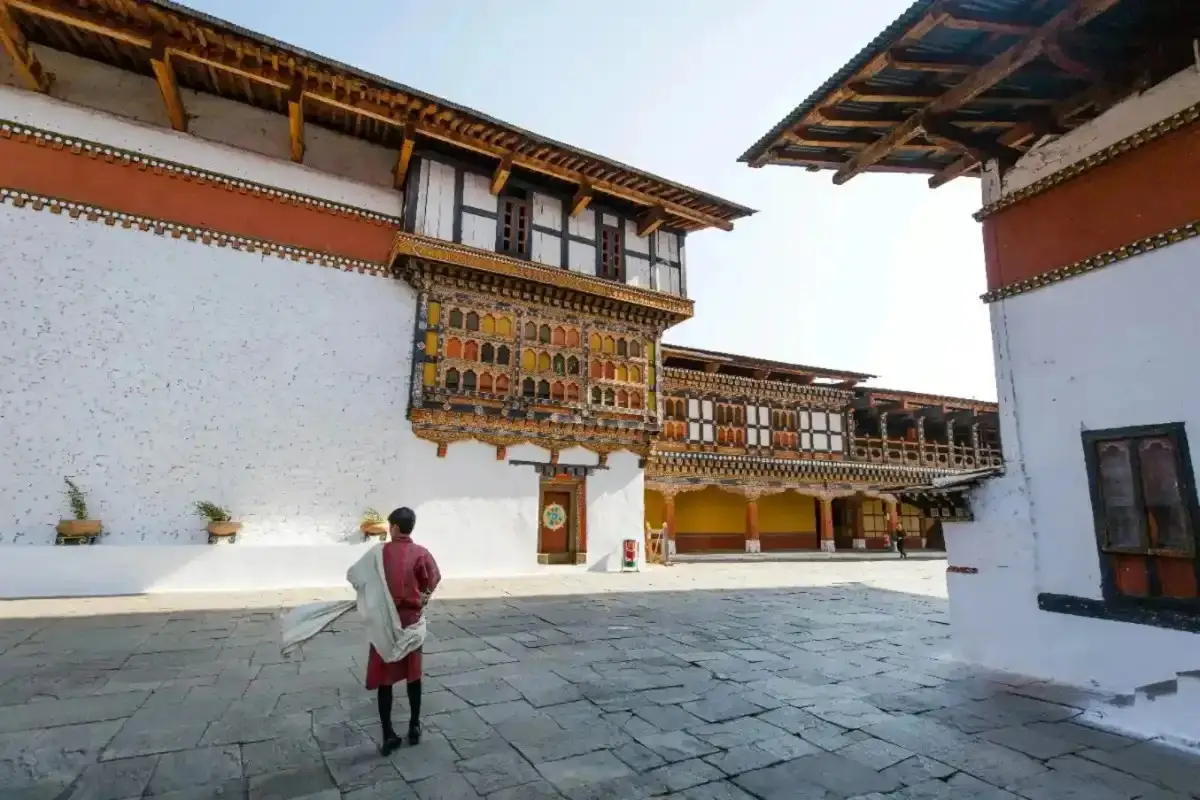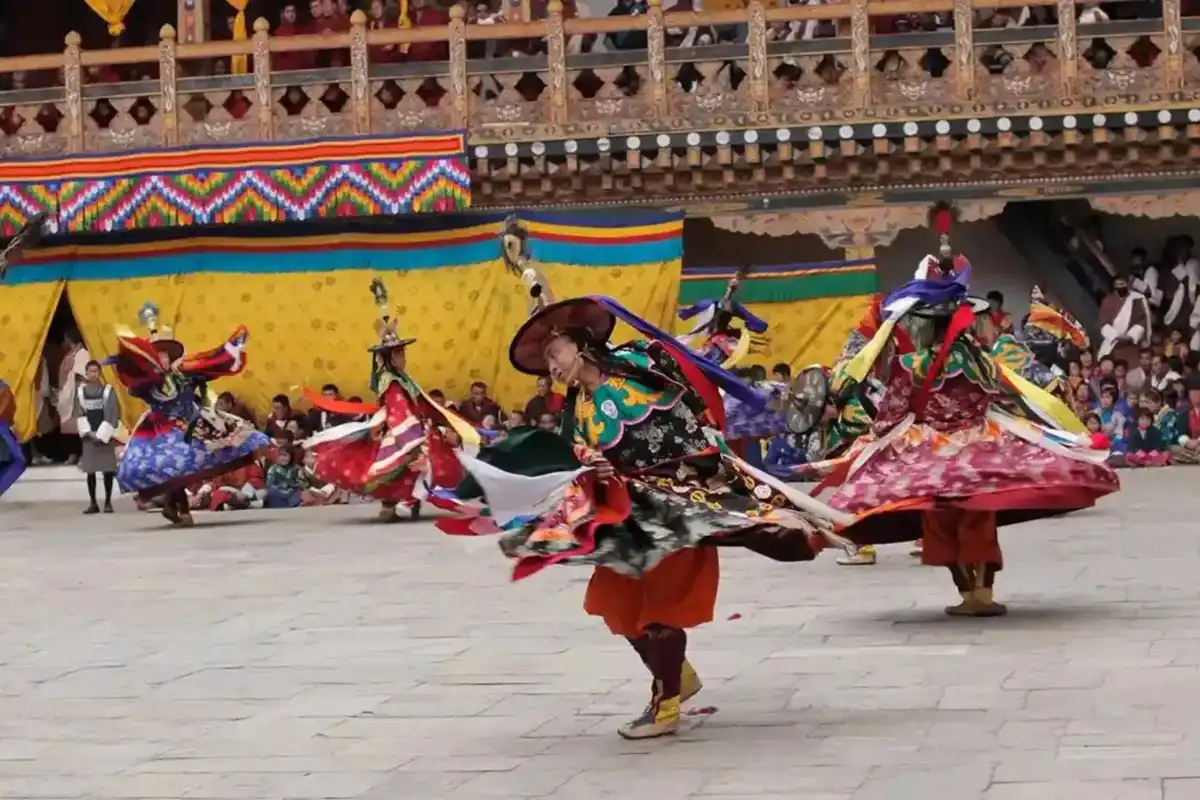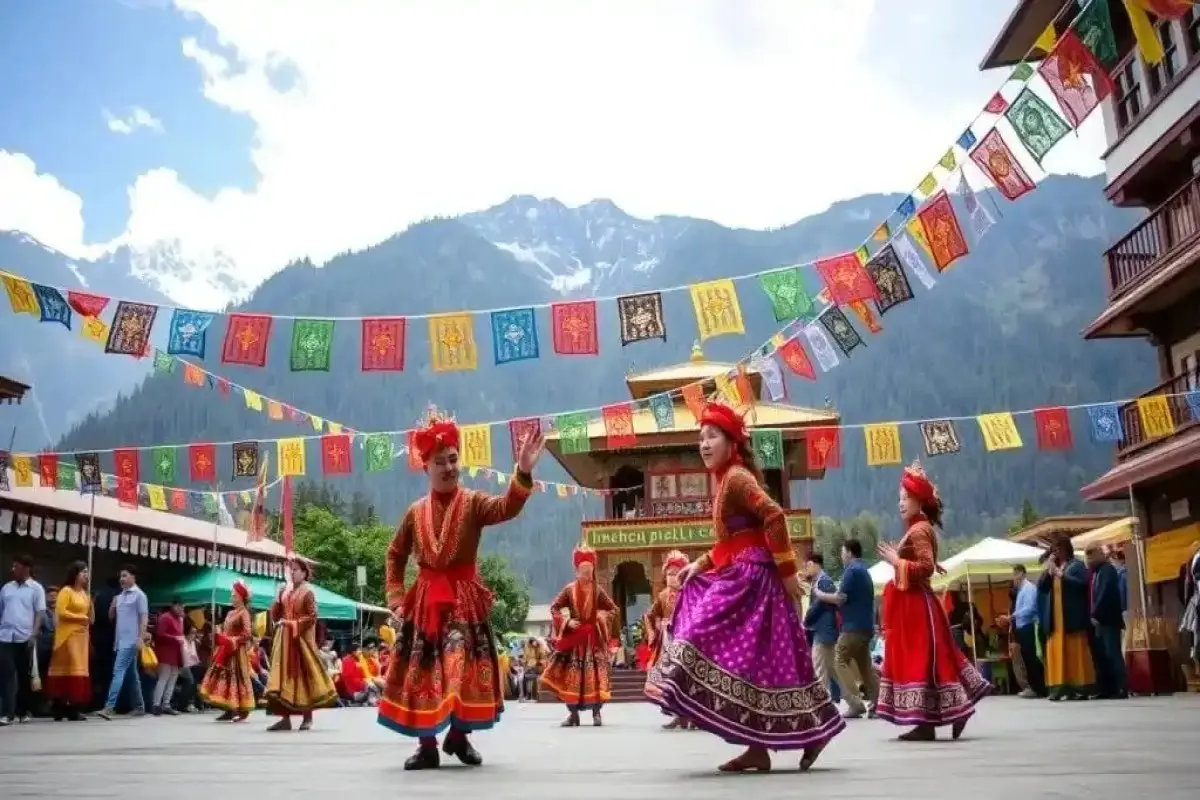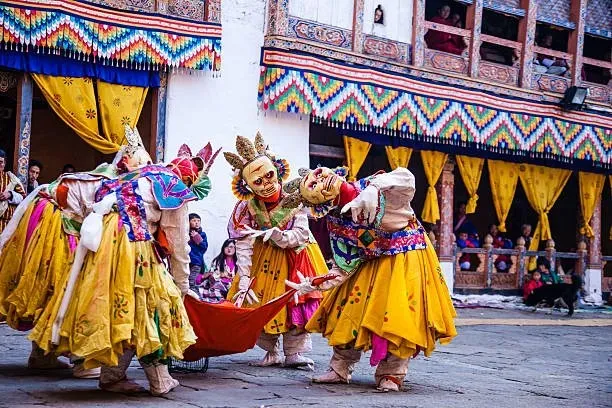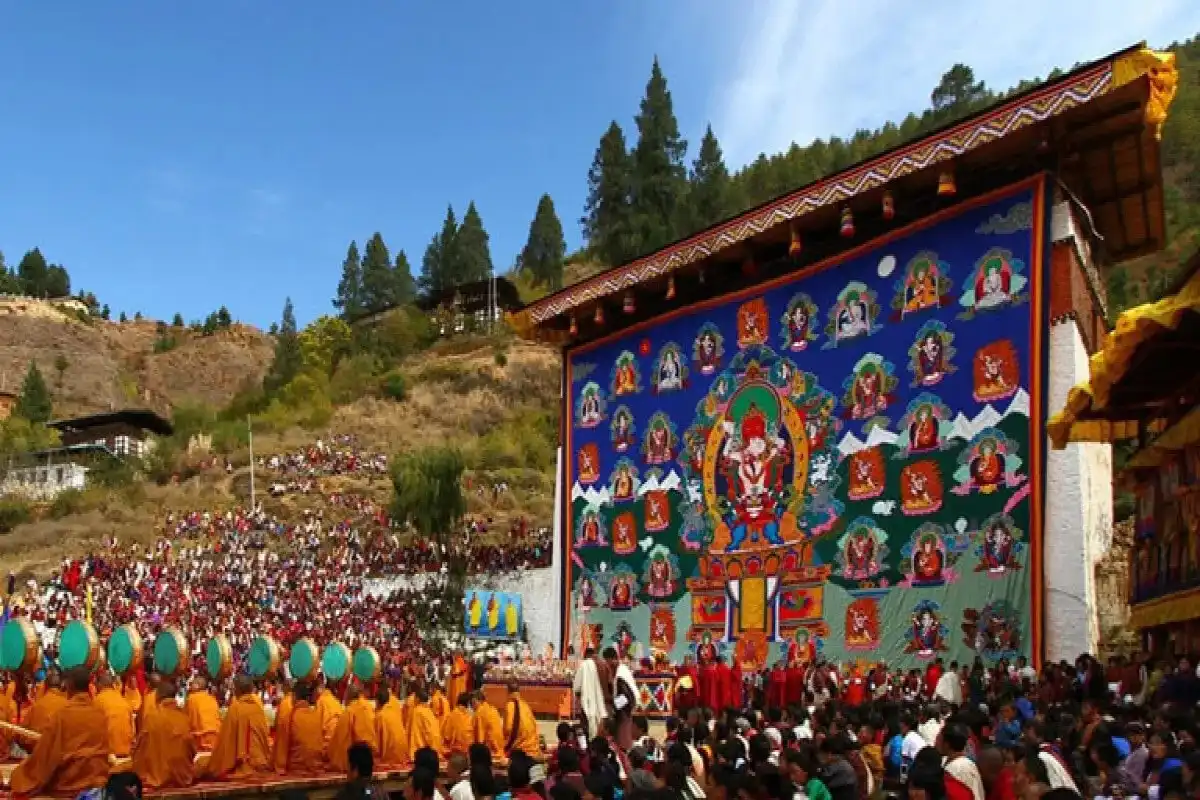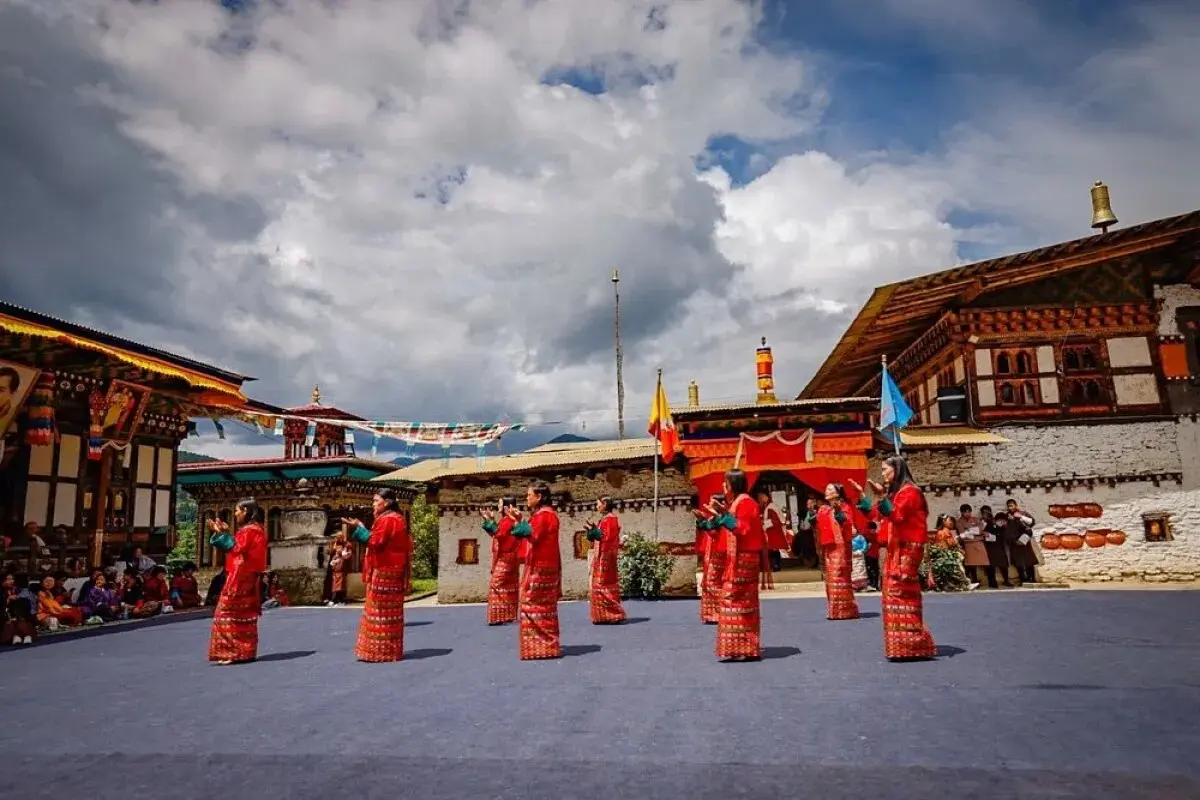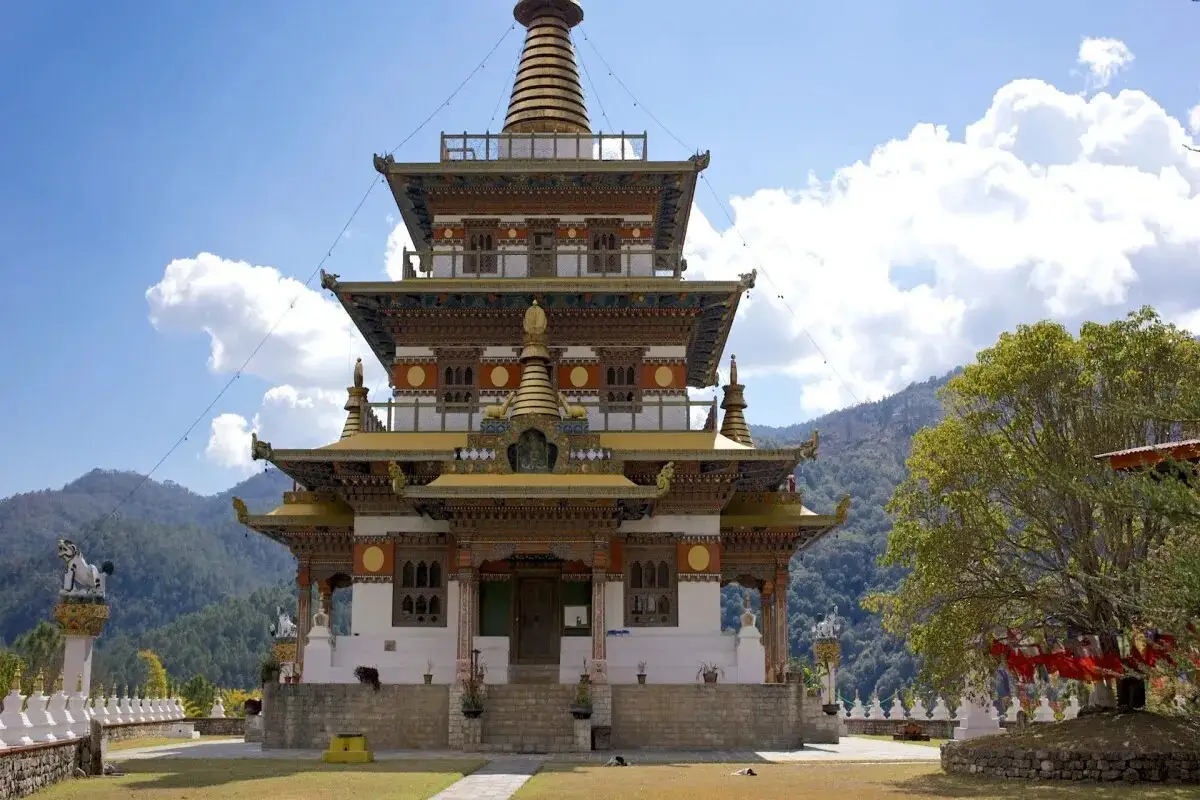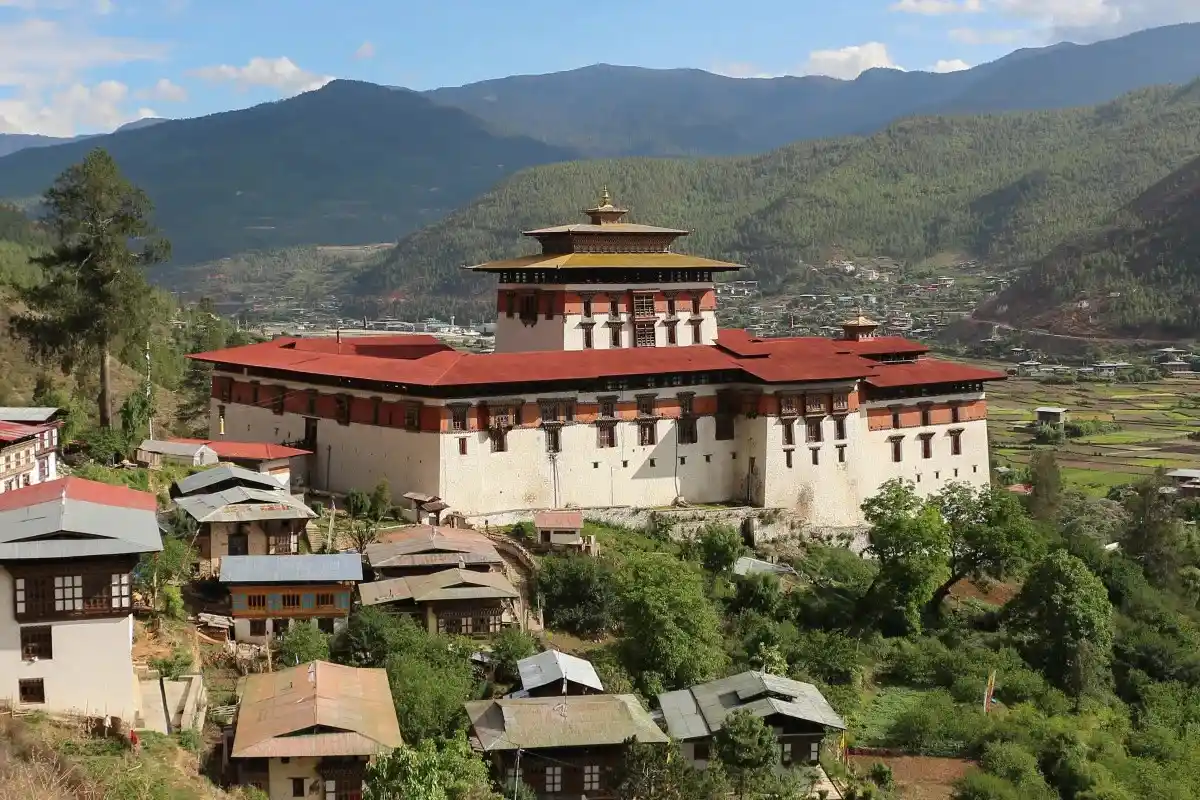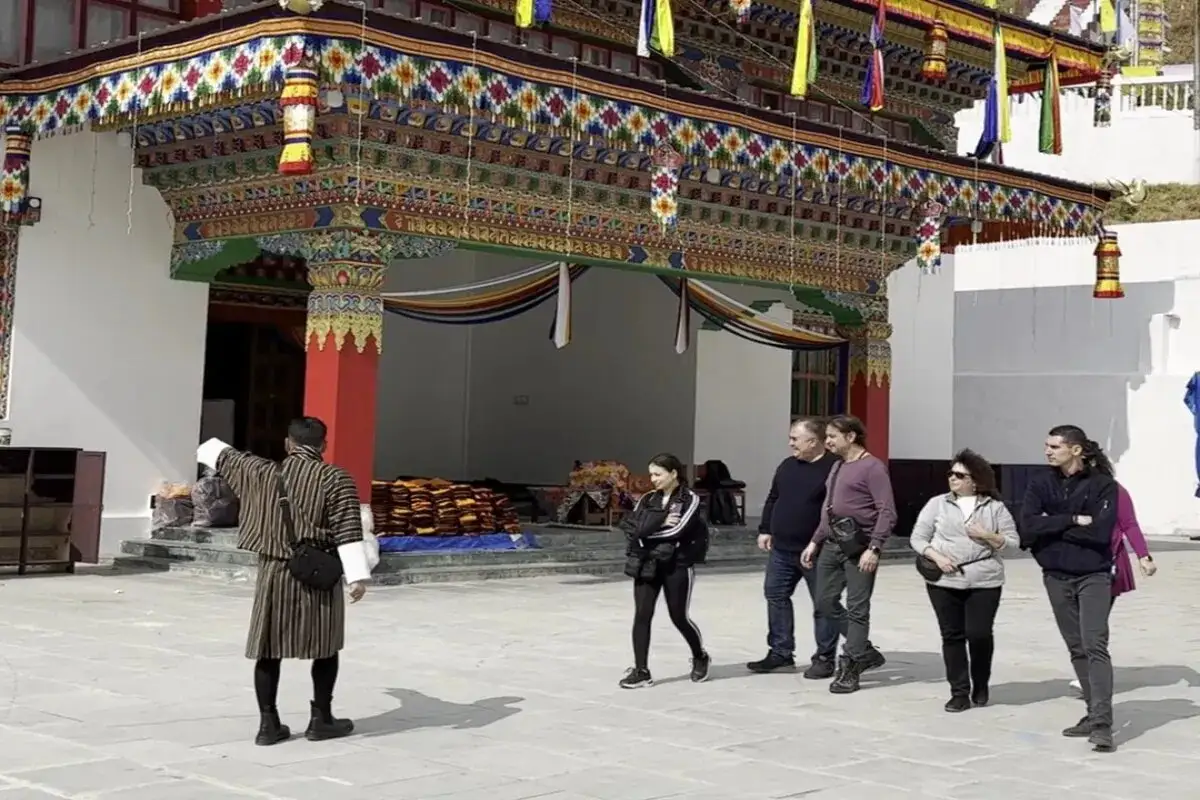Punakha Valley: A Deep Dive into Bhutan's Rich Heritage - 5 Days
Punakha Valley is located in the western region of Bhutan, situated between five other valleys. Punakha has a warmer climate. This valley was the capital of Bhutan. This valley is famous for rice cultivation. Punkaha lies on the banks of two important rivers.
Highlights
- Discovering Punakha Dzong
- Spiritual and wellness atmosphere
- Interaction with locals in Bhutan
- Explore Khamsum Yulley Namgyal Chorten
Trip Overview
During 5 days, you will discover gorgeous views, explore temples, walk through calm villages, feel crisp air, and relax by the riverbank. If you enjoy nature, exploring culture, and being in peaceful places, this trip fits you well. During the trip, you’ll see green hills, cross high passes, and explore the amazing buildings of Punakha Dzong. You will also get the chance to meet friendly local citizens and become familiar with their daily life.
There is always something to explore in Punakha Valley. If you stroll through rice fields, light butter lamps in a temple, or just sit at the riverbank, Punakha will melt your heart. Participate with us in this peaceful and hassle-free tour. We, Team Orrog, have given you a clear-cut plan for your tour. We can arrange your tour according to your destination.
Highlights
Punakha valley is rich in its cultural diversity.You will get to explore different Dzongs , a chance to interact with locals.Not only this, you can take part in spiritual and wellness activities .
Discovering Punakha Dzong
Punakha Dzong is a place of joy and happiness. This Dzong is the second biggest fortress at an altitude of 1200 meters. This dzong has six storeys. To reach the fort, you have to cross the bridge. This Dzong serves as a commercial establishment. You may view some of the best structures and beautiful Bhutanese crafts here.
Spiritual and wellness atmosphere
Punakha Valley is known by many tourists for its peaceful environment. You will discover calm and natural beauty here. There are many locations of spiritual significance, from a monastery to a fort. Here, you have the opportunity to interact with nature and learn about Buddhism. The monastery offers a wellness experience that includes the opportunity to meditate. You may also offer spring treatment and have temple bell sound healing. The plants and animals of Punakha make it an outstanding spot for you to be.
Interaction with locals in Bhutan
Meeting people from Bhutan may be a very meaningful and fulfilling element of your trip. People from Bhutan are recognized for being kind, humble, and putting a lot of value on respect and peace. People from Bhutan are polite and don't talk too much. Say hello with a smile and a bow. Inhabitants in Bhutanese villages are generally pleasant. Monks are friendly but should be treated respectfully.
Explore Khamsum Yulley Namgyal Chorten
A visit to Chorten is beneficial for the spirit and the senses. This chorten offers a magnificent view of the Valley. Each level of the chorten stands for a step toward spiritual growth. You will see different statues and wall paintings on each floor. March to May and September to November are the best times to visit this chorten.
Exploring Bhutan’s Heritage Site in Punakha Valley
Some cultural heritages you will get to explore, during your trip to Punakha valley are Punakha Dzong, Jigme Dorji National Park , Poo Chu Suspension Bridge,Khamsum Yulley Namgyal Chorten and Talo Monastery.
Punakha Dzong
When it comes to the Valley, Dzong is without a doubt one of the most breathtaking places to visit. In the Dzong, the Royal Family congregates and exercises their authority. Due to the garden that is located to the left of the gate and the sculpture that is carved into the stone, the Dzong is even more captivating.
Jigme Dorji National Park
Another Punakha's significant location is the awesome Jigme Dorji National Park. You can come here to learn about alpine zone fauna and rare vegetation diversity. This vast national park has mountains ranging from 1500 to 6500 meters. Rare fauna and birds, and wildlife can also be seen when you visit this national park.
Poo Chu Suspension Bridge
This bridge is popular in Punakha. The bridge connects the two villages. It's Bhutan's largest suspended bridge. Prayer flags in bright colors cover the bridge.
Khamsum Yulley Namgyal Chorten
You will feel wonderful after you trek to the Chorten. The temple was constructed to promote stability and peace within the nation. The most enjoyable activity that can be done in Punakha is to go up to the monastery. This monastery is directed by four lovely steps.
Talo Monastery
A large and stunning edifice, the Monastery is a lovely place of worship. The purpose of this monastery is to provide a place of prayer and meditation for individuals from all over the world. Crafts are displayed here. Local villagers and enthusiasts fill the monastery during the Talo Festival.
Conclusion of Punakha Valley Tour
Your visit to Punakha will be filled with peace, the beauty of nature, and enriched with the culture. You will interact with the local people and experience the simple and happy lives of the people. You will see many beautiful gardens, peaceful woods, and the fantastic mountain views that are the most picturesque. Everything about your holiday, such as the place where you sleep, the meals, the personnel, the guides, and the transport, is being taken care of by us, Team Orrog. We made sure that you can easily chill out and find greater joy by doing so. We will be there to walk with you and see you off, even as we make sure that the departure is smooth and secure. It is something you absolutely can't forget, even with time.
During 5 days, you will discover gorgeous views, explore temples, walk through calm villages, feel crisp air, and relax by the riverbank. If you enjoy nature, exploring culture, and being in peaceful places, this trip fits you well. During the trip, you’ll see green hills, cross high passes, and explore the amazing buildings of Punakha Dzong. You will also get the chance to meet friendly local citizens and become familiar with their daily life.
There is always something to explore in Punakha Valley. If you stroll through rice fields, light butter lamps in a temple, or just sit at the riverbank, Punakha will melt your heart. Participate with us in this peaceful and hassle-free tour. We, Team Orrog, have given you a clear-cut plan for your tour. We can arrange your tour according to your destination.
Highlights
Punakha valley is rich in its cultural diversity.You will get to explore different Dzongs , a chance to interact with locals.Not only this, you can take part in spiritual and wellness activities .
Discovering Punakha Dzong
Punakha Dzong is a place of joy and happiness. This Dzong is the second biggest fortress at an altitude of 1200 meters. This dzong has six storeys. To reach the fort, you have to cross the bridge. This Dzong serves as a commercial establishment. You may view some of the best structures and beautiful Bhutanese crafts here.
Spiritual and wellness atmosphere
Punakha Valley is known by many tourists for its peaceful environment. You will discover calm and natural beauty here. There are many locations of spiritual significance, from a monastery to a fort. Here, you have the opportunity to interact with nature and learn about Buddhism. The monastery offers a wellness experience that includes the opportunity to meditate. You may also offer spring treatment and have temple bell sound healing. The plants and animals of Punakha make it an outstanding spot for you to be.
Interaction with locals in Bhutan
Meeting people from Bhutan may be a very meaningful and fulfilling element of your trip. People from Bhutan are recognized for being kind, humble, and putting a lot of value on respect and peace. People from Bhutan are polite and don't talk too much. Say hello with a smile and a bow. Inhabitants in Bhutanese villages are generally pleasant. Monks are friendly but should be treated respectfully.
Explore Khamsum Yulley Namgyal Chorten
A visit to Chorten is beneficial for the spirit and the senses. This chorten offers a magnificent view of the Valley. Each level of the chorten stands for a step toward spiritual growth. You will see different statues and wall paintings on each floor. March to May and September to November are the best times to visit this chorten.
Exploring Bhutan’s Heritage Site in Punakha Valley
Some cultural heritages you will get to explore, during your trip to Punakha valley are Punakha Dzong, Jigme Dorji National Park , Poo Chu Suspension Bridge,Khamsum Yulley Namgyal Chorten and Talo Monastery.
Punakha Dzong
When it comes to the Valley, Dzong is without a doubt one of the most breathtaking places to visit. In the Dzong, the Royal Family congregates and exercises their authority. Due to the garden that is located to the left of the gate and the sculpture that is carved into the stone, the Dzong is even more captivating.
Jigme Dorji National Park
Another Punakha's significant location is the awesome Jigme Dorji National Park. You can come here to learn about alpine zone fauna and rare vegetation diversity. This vast national park has mountains ranging from 1500 to 6500 meters. Rare fauna and birds, and wildlife can also be seen when you visit this national park.
Poo Chu Suspension Bridge
This bridge is popular in Punakha. The bridge connects the two villages. It's Bhutan's largest suspended bridge. Prayer flags in bright colors cover the bridge.
Khamsum Yulley Namgyal Chorten
You will feel wonderful after you trek to the Chorten. The temple was constructed to promote stability and peace within the nation. The most enjoyable activity that can be done in Punakha is to go up to the monastery. This monastery is directed by four lovely steps.
Talo Monastery
A large and stunning edifice, the Monastery is a lovely place of worship. The purpose of this monastery is to provide a place of prayer and meditation for individuals from all over the world. Crafts are displayed here. Local villagers and enthusiasts fill the monastery during the Talo Festival.
Conclusion of Punakha Valley Tour
Your visit to Punakha will be filled with peace, the beauty of nature, and enriched with the culture. You will interact with the local people and experience the simple and happy lives of the people. You will see many beautiful gardens, peaceful woods, and the fantastic mountain views that are the most picturesque. Everything about your holiday, such as the place where you sleep, the meals, the personnel, the guides, and the transport, is being taken care of by us, Team Orrog. We made sure that you can easily chill out and find greater joy by doing so. We will be there to walk with you and see you off, even as we make sure that the departure is smooth and secure. It is something you absolutely can't forget, even with time.
Short Itinerary
Arrive in Paro and drive to Punakha; visit Punakha Dzong and rest.
Hike to Chimi Lhakhang via Sopsokha village and explore the temple.
Trek to Longchu Lake, enjoying nature, and return to Punakha.
Visiting Wangdue Phodrang Fort, local villages, and a nunnery.
Return to Punakha and depart for home.
Price Includes
- Pick-up and drop-off services
We provide a pick-up service from the airport to the hotel on your arrival day and from the hotel to the airport on the departure day.
- Lunch, Breakfast, and Dinner
All meals during the trek will be provided by the company. However, personal food items like coffee, tea, cold drinks, etc, are not included in the package.
- A guide proficient in English
A certified, English-speaking guide will accompany you throughout the trip. The guide will offer information about the trail, culture, nature, and history, and ensure your safety and a smooth experience.
- Comfortable SUV vehicle
A private SUV will be used for road travel before or after the trek. These vehicles are ideal for Bhutan’s hilly terrain and provide a comfortable ride.
- All types of entry costs
This covers all permit fees, monument entrance fees, park fees, and any other official charges required for trekking or sightseeing activities during the tour.
- Professional Drive
We ensure a safe and smooth drive during your tour. We have licensed and experienced drivers for that.
- Sleeping bag and tent
Quality sleeping bags and tents are provided for your comfort and warmth during the camping nights on the trek. So, you don’t have to worry about buying a new one.
- Farewell dinner
A special farewell meal, typically arranged in a traditional restaurant, is offered at the end of the tour to celebrate the journey and thank the participants.
- Evening Tea/coffee with snacks
Each evening, you’ll be served tea or coffee along with light snacks like biscuits and popcorn.
- Drinking Water
Safe and clean drinking water is provided throughout the trek.
- Pick-up and drop-off services
We provide a pick-up service from the airport to the hotel on your arrival day and from the hotel to the airport on the departure day.
- Lunch, Breakfast, and Dinner
All meals during the trek will be provided by the company. However, personal food items like coffee, tea, cold drinks, etc, are not included in the package.
- A guide proficient in English
A certified, English-speaking guide will accompany you throughout the trip. The guide will offer information about the trail, culture, nature, and history, and ensure your safety and a smooth experience.
- Comfortable SUV vehicle
A private SUV will be used for road travel before or after the trek. These vehicles are ideal for Bhutan’s hilly terrain and provide a comfortable ride.
- All types of entry costs
This covers all permit fees, monument entrance fees, park fees, and any other official charges required for trekking or sightseeing activities during the tour.
- Professional Drive
We ensure a safe and smooth drive during your tour. We have licensed and experienced drivers for that.
- Sleeping bag and tent
Quality sleeping bags and tents are provided for your comfort and warmth during the camping nights on the trek. So, you don’t have to worry about buying a new one.
- Farewell dinner
A special farewell meal, typically arranged in a traditional restaurant, is offered at the end of the tour to celebrate the journey and thank the participants.
- Evening Tea/coffee with snacks
Each evening, you’ll be served tea or coffee along with light snacks like biscuits and popcorn.
- Drinking Water
Safe and clean drinking water is provided throughout the trek.
Price Excludes
- International Airfare
- Visa Charges and Insurance
- Individual expenditures
- Additional-day lodging
- Laundry and telephone expenses
- Tips for the guide and the porter
- International Airfare
- Visa Charges and Insurance
- Individual expenditures
- Additional-day lodging
- Laundry and telephone expenses
- Tips for the guide and the porter
Punakha Valley: A Deep Dive into Bhutan's Rich Heritage Itinerary
If you are from outside Bhutan, you will enter the country through the Paro airport. There, you will meet with our representative. Following that, they will drive you to your destination in a private vehicle. The trip to Punakha, Bhutan, will begin. If you are already in the country, then you can come directly to Punakha. At the destination, you will check into your hotel. Take a little rest after checking in. Then, you can have your breakfast.
Immediately following breakfast, you will make your way to the Dzong. Adjacent to the monastery, you will observe the meeting point of two rivers. The Mo Chhu (Female) and Pho Chhu (Male) rivers converge at this location. Then, you will go across the river on a bridge. From the bridge, you will get an excellent view. Subsequently, you will be heading to the monastery. After that, you will make your way back to the accommodation. When you get to the hotel, you can rest or try a traditional hot stone bath.
Today, after waking up, you will have breakfast. After that, you will meet your guide. You will be exploring and uncovering the secrets of the Temple of Fertility. You will hike through Sopsokha village. During your trek, you will traverse a beautiful rice field. As you walk through a Sopsokha village, you will see a heritage-style house and a phallus.
You will arrive at Chimi Lhakhang after a short ascent. Upon your arrival, you will see lamps illuminate the dimly lit inner chamber. There, you can witness people meditating and monks chanting. After exploring the temple, you can also receive a fertility blessing. Then, you can learn about the Divine Madman. Here, you can engage with locals to gain insights about their past. Here, you can buy some interesting souvenirs. Upon the conclusion of your activities, you will return to your hotel. You will stay in the same hotel today.
On this particular day, you are required to get up at an early hour. Afterwards, you will have a hot coffee. Then, you will have a short ride to Dechenchholing village. Your trek will commence from this village. During the expedition, you must ascend the incline. In a short period of time, you will gain altitude. So, walk at a steady pace. During the walk, you will travel through woodland and the farmlands. You will be able to notice different kinds of trees and listen to the birds.
By trekking for hours, you will reach the Lake. You will be able to see the mountains from the lake. At the same time, you will be enjoying your meal. You can also capture some moments and meditate for hours. After exploring the lake, you will descend to Punakha. You will follow the same path. You will be staying at Punakha for the night.
You will wake up early in the morning. Then, you can have breakfast at a local cafe. Afterwards, you will embark on a journey to Wangdue Phodrang Fort. You can spot various mountains and different landforms during your journey. Following a little journey, you will reach Wangdue. When you get there, you will notice a beautiful fort. You can also explore Bhutan’s rich history here.
After spending your time, you will move towards the Rinchengang village. It will take you a short period of time to walk to the village. You will cross the bridge over the furious river. Once you have crossed the bridge, you will arrive at the settlement. You will be able to recognise an ancient stone home. You can see the way that people live here. After exploring the village, you will then go to the Nunnery. Following the completion of your tour to the nunnery, you will return to the fort. You will be spending the night in Wangdue Phodrang.
You will make your way back to Punakha when you have finished touring Wangdue Phodrang. You will travel on the same path. The final meal of the tour will be served to you after you have arrived at Punakha. After that, you will pack your bag. Then, you will return to your home. If you are from another country, our representative will drop you off at Paro airport. They will drop off 3 hours before the flight time. We will make arrangements for a car to take you back to the location if you are from the same country.
Know Before You Travel
-
The Valley has a variety of fun things to do,:
spiritual destinations, and cultural attractions. You can see Dzong, the fertility shrine, and the monastery in a short amount of time. If you appreciate being outside, you can travel to Chorten. You may meet people from the region by going to Talo village, Nobgang village, and the Sangchhen Dorji Lhuendrup Nunnery. You may go around Lobesa's Rice Fields for a natural walk. Rafting on the Mo Chhu and Pho Chhu rivers is one way to have an adventurous experience.
Punakha Map
Download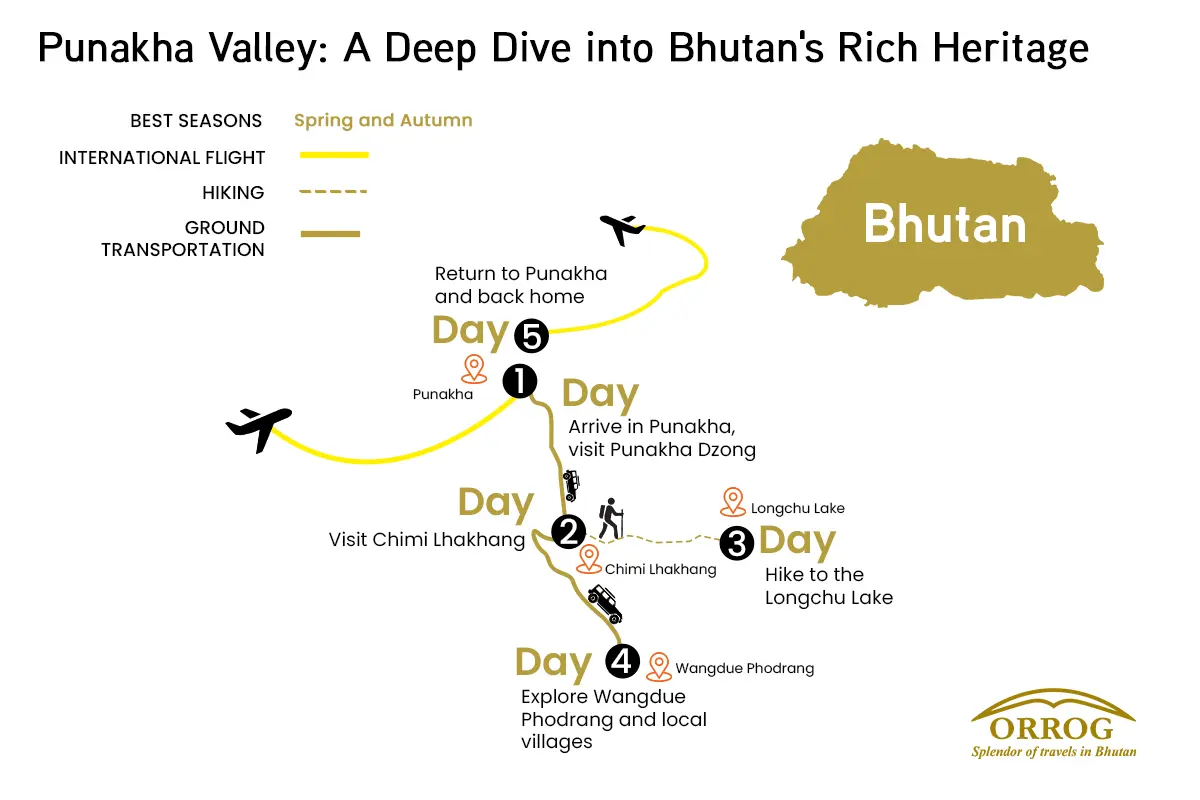
Punakha Valley: A Deep Dive into Bhutan's Rich Heritage 5 Days
FAQs for Punakha Valley: A Deep Dive into Bhutan's Rich Heritage
Orrog is one of the certified companies in Bhutan. We have years of experience with the certified guide. All the tours we have conducted are safe.
Some of the important places you should not miss during the Punakha valley are Punakha Dzong, Chimi Lhakhang Monastery, Pho Chhu Suspension Bridge, and Sangchhen Dorji Lhuendrup Nunnery. Despite these places, there are lots of activities to do in Punakha.
This place is also known as the Palace of Great Happiness. Punakha Dzong is known for its stunning architecture. It holds great historical importance and is located at the lovely meeting point of two rivers.
To cancel the tour, you have to go through the cancellation policy. You can directly contact our office. Some of the amount will be deducted from your advance payment.
This monastery is famous for its unique blessing. This monastery is especially visited by couples to receive a fertility blessing. To reach the monastery, you have to hike for a certain amount of time.
The ideal time to visit Punakha Bhutan is from October to April. During these months, the weather is pleasant and good for sightseeing. If you wish to join the Punakha Tshechu festival, you should come in February or March.
Yes, all age groups can explore Punakha. You can easily reach the different locations in the valley. We can customize your package according to your destination.
The Punakha tour is available for booking year-round. But we recommend you book your trip a month ago for good hotels and vehicles.
Bhutan uses types C, D, and G plugs. Voltage is 230V, 50Hz.
Yes, it's advisable to bring a universal travel adapter.
Charging opportunities are limited, mostly available at the beginning and end of the trek.
Power supply is generally stable, but occasional outages can occur.
It's not recommended during the trek due to limited power availability.
You need a visa and all necessary permits for your trip. These documents can not be received on the day of your arrival, so they must be processed before coming here. After you book a trip with us, we will manage these papers for you. Your Bhutan visa is arranged by Orrog as part of the package.
The main way to come to Bhutan is through Paro International Airport, which is well-connected to cities like Bangkok, Delhi, Kathmandu, and Singapore. Most people arrive by air, but if you plan to come via road, you can enter through Phuentsholing, located on the southern border with India, which is the most commonly used entry point.
It is recommended to apply for the visa at least 20 days before your planned departure date so that there is enough time for processing your Bhutan visa, finalizing your itinerary, and arranging your guides and transportation. Although visa processing itself is relatively fast once payment is received, early preparation helps avoid delays and ensures availability, especially during peak seasons (spring and autumn).
You don’t require a passport-size photo for the visa, but it is wise to carry at least 2–4 recent passport-sized photographs during your trip. These may be needed for local permits, registration, or when applying for a local SIM card upon arrival in Bhutan.
Yes, you can lengthen your stay in Bhutan either before or after your trip. Bhutan’s tourism model requires visitors to pay a Sustainable Development Fee (SDF) and a daily package cost, so any extra days will involve additional charges. Extensions are a great opportunity to explore cultural sites in Paro, Thimphu, or even add another short trip or day hike.
Yes, Bhutan requires full tour payment in advance before your visa can be processed and issued. The government of Bhutan regulates this policy to ensure that all travel arrangements are confirmed through a licensed Bhutanese tour operator. We are a licensed tour operator that ensures you have everything you need for a trouble-free trip.
Any personal expenses are not covered in the package like:
- Tips for your guide and other staff
- Bottled drinks and snacks(personal expense)
- Souvenirs or local crafts
Credit cards are easily accepted in major cities like Paro and Thimphu. But in remote areas, you may not have access to a card or an ATM. So, it is best to carry some cash before heading for the trip.
Tipping is not mandatory, but it is a widely appreciated gesture and a customary way to show gratitude for good service. The tipping guideline would be to give USD 5-10 per day as a tip for the guides and other staff.
Paro International Airport is the only international airport in Bhutan. It is well connected by flights from cities like Bangkok, Delhi, Kathmandu, and Singapore.
Yes, airport pick-up and drop-off are included in the package. We will have your guide and driver meet you at the airport and transport you to your hotel.
While Bhutan's roads are mostly paved, some parts are narrow, winding, and occasionally affected by weather. However, we ensure your travel is safe, well-maintained, and driven by an experienced professional throughout the journey.
Once you arrive in Paro, we will arrange private ground transportation to the starting point as we pass through lush valleys and traditional villages. So, you don’t have to worry about any transportation services.
Yes, it is very safe to travel even with children in Bhutan. Roads are well-maintained, and the pace of travel is generally relaxed and child-friendly.
We will usually travel in comfortable, private vehicles with experienced drivers. All ground transportation is included in your package.
The Bhutanese Ngultrum is used in Bhutan. All local transactions during the trip will be in BTN.
US Dollars (USD) are generally accepted at larger hotels, souvenir shops, and tour operators, particularly in Paro and Thimphu. However, it’s advisable to convert your currency to BTN for general purchases in rural areas. Other currencies like the Euro or the Pound are not commonly accepted directly.
No, credit or debit cards are not accepted on the trip, as it takes you through remote regions with no banking or electronic payment access. All trip-related payments like accommodation, meals, permits, etc, are paid in advance
You can exchange foreign currency at the Paro International Airport, at banks, or through licensed money changers in cities like Thimphu and Paro. It's best to exchange enough cash before heading out on the trip.
The national language is Dzongkha, but many Bhutanese also speak English. If you speak English and are worried about communicating with the local people, you will have your guide as a translator.
Yes, all licensed tour guides in Bhutan are required to speak fluent English. Many are also trained in other languages such as German, Japanese, or French. Communication during the trip will be smooth and clear in English.
Most signboards, tourist maps, and information brochures are written in English, especially in tourist destinations like Paro, Thimphu, and trailheads. Directional signs along routes are often labeled in both Dzongkha and English.
No, learning Dzongkha is not at all needed for the trip, but knowing a few basic words like "Kuzu zangpo la" (Hello) or "Kadrinche la" (Thank you) is a good way to interact with the locals.
Language barriers are minimal, as your guide will handle all communication with locals and support staff. Your guide will translate for you during your interaction with the locals.
To greet people, you can greet with locals “Kuzu zangpo la” (Hello) by performing a slight bow. Most common greetings include physical greetings, such as shaking hands less visible, especially in rural areas.
Yes, but remember to seek permission, especially when taking photos of monks, locals, or temples. Please note that clicking photos is not allowed at most religious sites.
Visitors should dress modestly and respectfully. This means:
- Covering shoulders and knees
- Removing hats and sunglasses
- Not wearing shorts or sleeveless tops
This applies to both men and women.
Yes, Bhutanese society is deeply rooted in Buddhism and tradition. Here are some key taboos:
- Do not point your feet at people or sacred objects
- Never touch anyone on the head, as it is considered sacred
- Walk clockwise around temples, stupas, and religious monuments
- Avoid public displays of affection
While gifts are not expected, they may be accepted graciously if given with respect. It is advisable to consult with the guide before giving out anything.
Bhutan follows Bhutan Time (BTT), which is UTC/GMT +6 hours. This time zone remains consistent throughout the year.
No, Bhutan does not observe daylight saving time. The country maintains the same time year-round.
Bhutan is 30 minutes ahead of India. For example, 12:00 PM in India is 12:30 PM in Bhutan.
Yes, souvenirs can be bought in Paro or Thimphu before or after the trip.
Some popular souvenirs include hand-woven textiles (kira and gho fabric), prayer flags, thangka (religious scroll) paintings, handmade paper products, traditional masks, and Buddhist artifacts.
You can do some gentle bargaining in local street markets. However, in government-run shops and fixed-price stores, prices are usually non-negotiable.
Yes, you can easily purchase a SIM card upon arrival in Bhutan. We will assist you with the process, and you'll need a passport copy and a passport-sized photo.
No, internet access is not available during the trip. However, Wi-Fi is available in hotels in Paro and Thimphu before and after the trip.
Since the weather can be unpredictable and temperatures can vary drastically, layered clothing is essential. You should pack:
- Base layers (thermal tops and bottoms)
- Insulating layers like fleece or down jackets
- Waterproof and windproof outer layers
- Warm hats, gloves, and neck gaiters for freezing conditions
- Moisture-wicking socks and weatherproof trekking boots
Nighttime temperatures can be extremely cold, especially at high-altitude places. So you need to have enough clothing to keep you warm.
The weather is clear with mild daytime temperatures during spring and autumn.
Tsechu is a religious festival held in honor of Guru Rinpoche, featuring mask dances, rituals, and traditional performances. It's a colorful and spiritual experience for all ages.
Yes, festivals are family-friendly and offer a unique cultural experience for children, although large crowds can be overwhelming for very young kids.
Modest, respectful attire is recommended. Traditional Bhutanese dress (Gho/Kira) is encouraged and can be arranged for you.
Reviews & Ratings
-
Guarantee -
Thimphu,Bhutan -
975+17160228
Ready to Explore Bhutan?
Start your journey today and discover the magic of Bhutan with our expert guides and carefully crafted tours.
Book This Trip
-
No booking or credit card fees -
Best price guarantee -
Full customize trip
Ask a Question
Feel free to ask us anything about this tour. A travel expert will then get back to you as soon as possible
Ready to Explore Bhutan?
Start your journey today and discover the magic of Bhutan with our expert guides and carefully crafted tours.
